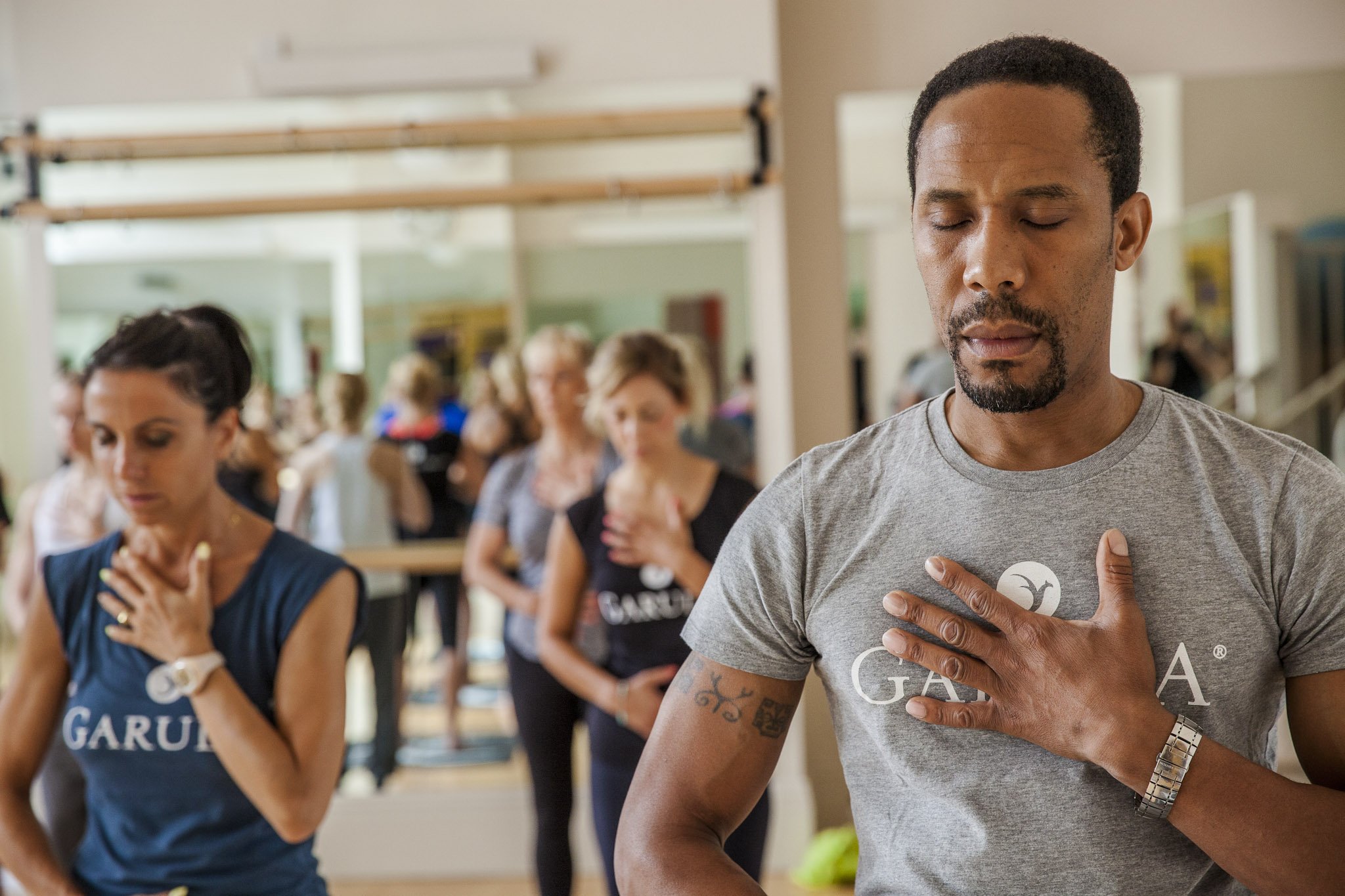August 31, 2021
The 5 Principles of Yoga and How They Are Present in Garuda
Swami Vishnudevanada was an active and spiritual teacher sent to spread the message of yoga in the West. He was known for a more contemporary approach to teaching the philosophy and practice of yoga and transformed the ancient wisdom of yoga into five basic principles.
Here are the five principles of yoga and how they are incorporated into the Garuda method.
1. Proper Exercise: Asana
A fundamental principle of yoga is the ability to use routines, positions and sequences to carry out a fulfilling workout. Those who indulge in yoga recognise that proper exercise is a core aspect of keeping the body healthy.
Coined as yoga asanas, postures are used to stretch and tone muscles, joints, tendons and ligaments whilst enhancing strength and flexibility. They also improve blood circulation and release any tension or stiffness in the body.
It is also noted that asanas are designed to be inclusive, as they take into account all fitness levels and abilities. It is vital that they can be practised safely by everyone, much like Garuda’s adaptability.
The asana practices of yoga are heavily integrated into the foundations of Garuda. Movements are designed to be contemporary and fluid whilst also working in every area of the body.
Instead of holding positions, we use the Garuda technique to move through them to target areas from the macro to the micro. Our strength lies in how we move from position to position or how we get from one Asana to the next.
2. Proper Breathing: Pranayama
In yoga, breathing practices are called pranayama, which means to control the subtle energy in the body. By practising pranayama, you can connect your body to the solar plexus area, where this energy is stored and can then be released.
However, breathing practices can rejuvenate the body through the simple science of oxygen. The cells in our bodies rely on oxygen to thrive, but many of us rarely take time for deeper breathing. When we breathe deeply, our cells become nourished and strong, and when we exhale, the toxicity is removed from our systems.
Pranayama is an integral part of the Garuda method and is incorporated throughout to allow us to reap these physiological benefits and connect the body and mind.
At Garuda, we use different Kriyas (breathwork techniques) to prepare the body for pranayama, which is, by its nature, a much deeper state of breathwork.
We appreciate that to get to that stage, the body has to prepare itself in more ways than one for pranayama to work in the best way. This will ultimately allow the energy to move fully through the body.
3. Proper Relaxation: Savasana
Modern living comes with stress and anxiety, which needs to be released from the body and mind before physical and mental tension occurs. Being able to relax and relieve stress is a core part of yoga and Garuda.
Savasana is used to completely relax the entire body, mind and soul and is often practised while lying still near the end of a Yoga class. However, we have found a different way to incorporate this relaxation into the Garuda method.
We do this by moving the body into a parasympathetic state (or in a very relaxed manner) while moving through our positions rather than lying still.
While you still challenge the body through difficult routines, we always look for ways to work the parasympathetic system. This helps to bring calm energy and a meditative state to our movements, which helps to bring our focus inward rather than sending this precious energy out.
4. Proper Diet
The fourth principle of yoga is considering how you eat and how it impacts your health and wellbeing. In fact, yoga encourages a vegetarian diet and viewing food as fuel for energy and nourishment.
Within Garuda, there are no principles to guide your diet. However, we strongly believe in nourishing and conditioning the body.
Naturally, healthy lifestyle choices come with the dedication to maintaining a healthy body and mind. With a refreshed way of thinking, Garuda will allow you to have discipline in your daily life in a way that you deem suitable.
5. Positive thinking and Meditation: Vedanta & Dhyana
Lastly, positivity is intertwined within yoga’s core philosophies. Without positive thinking and meditation, it is harder to control the mind and experience inner peace. It is all about turning negative thoughts into positive ones to purify the mind.
Positive thinking and meditation are now contained within an exercise, but in yoga, it is encouraged to be incorporated into everyday life, much like we promote with Garuda.
In fact, we see Garuda as a lifelong voyage of discovery. Garuda inspires the body and mind to achieve greater innate confidence, with the positive reminder that you can accomplish new things every single day.
This is reflected in our Garuda Academy training as well. As a Garuda instructor, we believe that service comes first. Care, attention and how we can bring out the best in a person are important foundations in teaching our method.
We are working in the present and paying particular attention to what’s happening now rather than what happened in the past.
Dive into Garuda Principles with Teacher Training
Whilst the principles in both yoga and Garuda might seem complex as an outsider, the best way to fully understand and attach these principles to your life is to indulge in the practice.
With Garuda teacher training, you can incorporate our core principles into your teaching to inspire and captivate your students. Find our upcoming online training below, or contact us if we can answer any questions.
